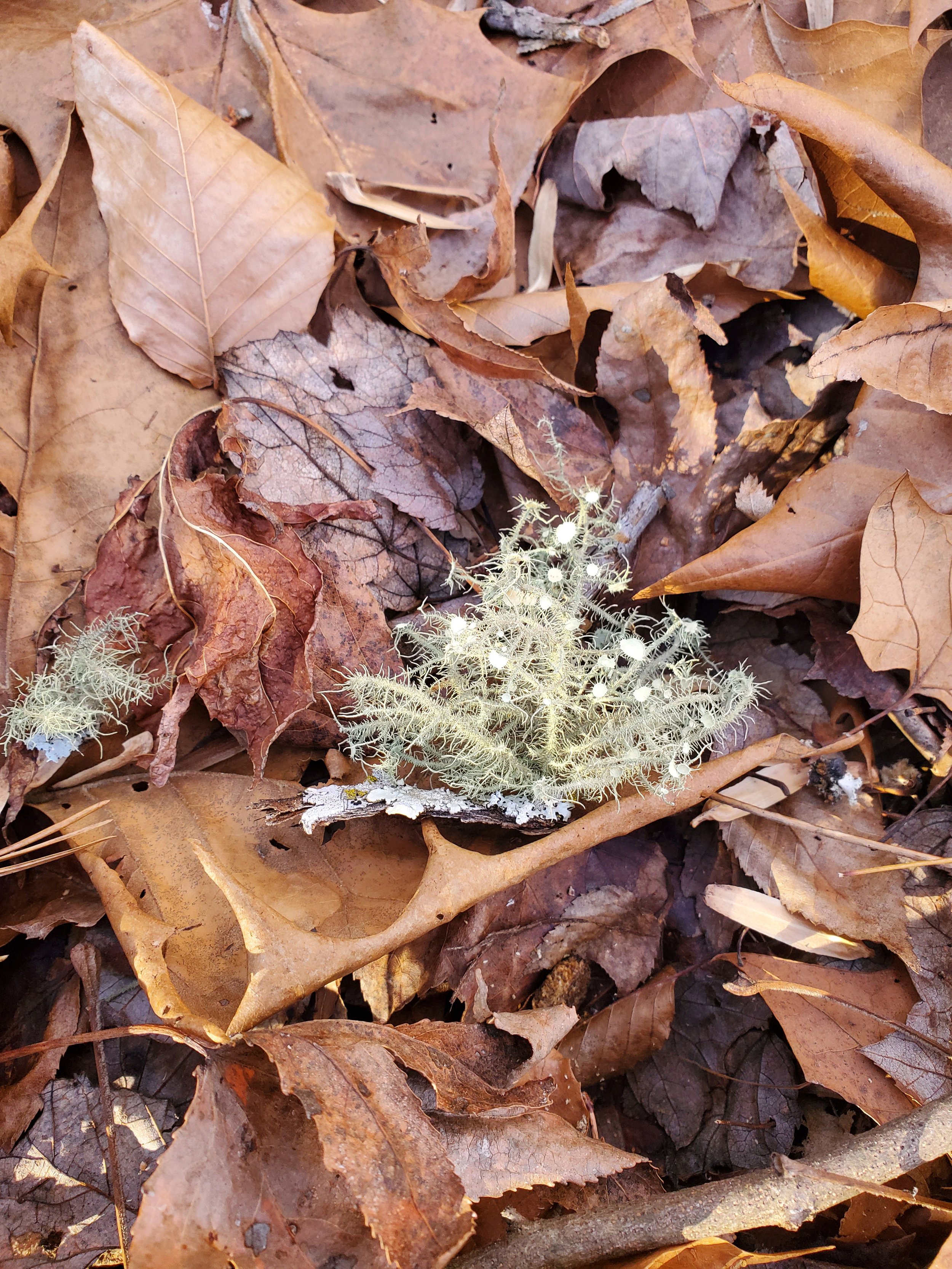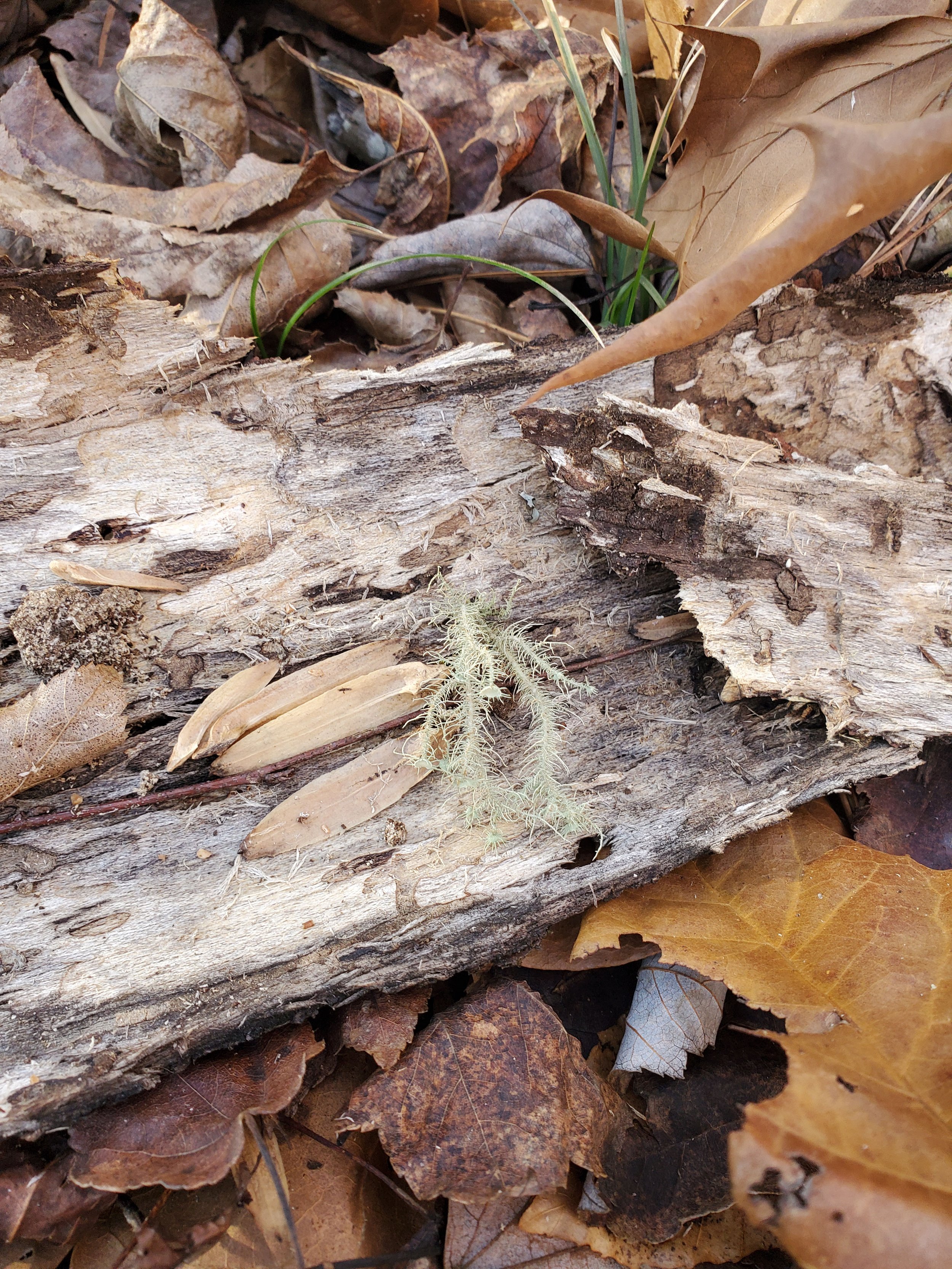When you wander through the woods in the dead of winter, you see things that remain unnoticed during the active growing season when everything is lush and green. This week, a lovely growth on the forest floor caught my attention. It was a lichen, Usnea strigosa, whose common name is Old Man’s Beard, Methuselah’s Beard, or Bushy Beard Lichen. At first glance it appears to rest on fallen leaves, but it rises from tiny bits of tree bark.
So, what is a lichen, exactly? It is a symbiotic partnership, a fungus that lives in association with an algae. Algae produces sugars through photosynthesis. These sugars feed the companion fungus. In return, the fungus serves as a protector of its algae partner, offering protection from drought and excessive sunlight. In dry periods, the thread-like organisms appear grayish in color. When rainfall moistens it, the algae is refreshed and the partnership takes on a sage-green tint. Those rounded pads at the tips of the threads are the fruit, producing reproductive spores.
Old Man’s Beard lichen is found throughout the southeast. Other than being something cool to see in the woodlands, Old Man’s Beard can tell us a bit about our surroundings. It does not tolerate air pollution, for instance, so its presence indicates clean air. There is abundant information touting the medicinal properties of Usnea (note: I’m reporting, NOT recommending!), ranging from wound treatment to tuberculosis prevention, tonics, astringents, or diuretics. It can even be used to produce an orange dye.
Look for Old Man’s Beard lichen in oak forests, in damp, shady areas. It slightly resembles unrelated Spanish Moss (Tillandsia usneoides, an epiphyte) or Reindeer Moss (Cladonia rangiferina). If you need to confirm its identity, seize one of the threads and pull the ends in opposite directions. The green algae covering will separate from the fungus, which is a white thread in the middle. The fungus is stretchy, almost like a rubber band.



